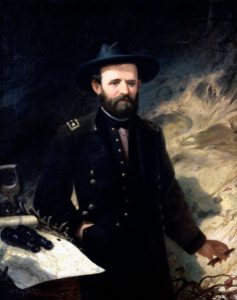This Week in History: April 24-30
Library of Congress established and George Washington becomes president.
By: Kelli Ballard | April 24, 2022 | 835 Words

George Washington inauguration (Photo by: Universal History Archive/Universal Images Group via Getty Images)
“Those who don’t know history are destined to repeat it.” ~ Edmund Burke
April 24, 1800: The Library of Congress Established
The Library of Congress in Washington, DC, is the largest library in the world. It has more than 170 million items and is housed in three buildings on Capitol Hill.
In 1880, President John Adams approved an act that moved the nation’s capital from Philadelphia to Washington, DC. Part of the agreement gave $5,000 to buy books to be used by the US Congress. During the War of 1812, British forces burned the Capitol, which destroyed the library.
President Thomas Jefferson sold about 6,487 books to the new library. Congress purchased his collection for around $23,950. But then, in 1850, another fire destroyed parts of the building and its contents, including nearly two-thirds of Jefferson’s contribution.

Outside the Library of Congress (Photo by: Joe Sohm/Visions of America/Universal Images Group via Getty Images)
After the Civil War, the library became known as the nation’s library and could be used by the public instead of just Congress members.
In 1903, President Theodore Roosevelt issued an executive order that transferred items to the library, including records from the Continental Congress and personal papers from six of the Founding Fathers – George Washington, Alexander Hamilton, Benjamin Franklin, James Madison, and James Monroe. In 1921, President Warren G. Harding also issued an executive order that transferred the original copies of the Constitution and Declaration of Independence to the library so they could be publicly displayed. They later moved to the National Archives in 1952.
Today, the Library of Congress has 21 reading rooms and more than 33 million books. Around 10,000 new items are added every day.
April 30, 1789: George Washington Became the First President of the US
George Washington became America’s first president on this date. He stood in front of 10,000 people at Federal Hall in New York City to take his oath of office on the balcony. He wore a plain brown broadcloth suit and held a ceremonial Army sword. Standing next to him, was Vice President John Adams. The new commander-in-chief took his oath, kissed the Bible, and then went to the Senate chamber to give his inaugural address. He said, in part:
“On the one hand, I was summoned by my country, whose voice I can never hear but with veneration and love. On the other hand, the magnitude and difficulty of the trust to which the voice of my country called me . . . could not but overwhelm with despondence one, who . . . ought to be peculiarly conscious of his own deficiencies.”
After the speech, Washington and a group of lawmakers and local politicians walked up Broadway to pray at St. Paul’s Chapel.
Other Notable Mentions
April 26, 1944: Workers at the retail company Montgomery Ward were on strike. The chairman of the company’s Chicago offices refused President Franklin Delano Roosevelt’s order to settle the strike by dealing with workers’ unions. Since it was wartime, the president was worried about product shortages, so federal troops seized the office and removed the chairman.
April 26, 1986: The Chernobyl nuclear power plant in Ukraine suffered an explosion, which caused a meltdown of nuclear fuel. It spread a radioactive cloud into the atmosphere.
April 26, 1994: For the first time in South Africa, multiracial elections were held. Nelson Mandela was elected president.
 April 27, 1865: The worst steamship disaster in US history happened on the Mississippi River after an explosion aboard the Sultana. At the time, Union soldiers who had been prisoners of war were returning home from the Civil War.
April 27, 1865: The worst steamship disaster in US history happened on the Mississippi River after an explosion aboard the Sultana. At the time, Union soldiers who had been prisoners of war were returning home from the Civil War.
April 28, 1945: Fascist rule in Italy ended after 23 years with the assassination of Benito Mussolini.
April 30, 1948: Palestinian Jews declared independence from British rule. They established the new state of Israel.
April 30, 1967: Boxer Muhammad Ali refused to be drafted into the US military, claiming religious exemption. He was stripped of his world heavyweight boxing champion title because of it.
Famous Birthdays
Guglielmo Marconi (April 25, 1874) was born in Bologna, Italy. He invented wireless telegraphy (radio) in the 1890s.
John J. Audubon (April 26, 1785) was born in Haiti. He was an American artist and naturalist who drew life-like drawings of the birds of North America.

Ulysses S. Grant (Photo by GraphicaArtis/Getty Images)
Frederick Law Olmsted (April 26, 1822) was born in Hartford, Connecticut. He helped to design some of the famous parks in America including New York’s Central Park and California’s Yosemite National Park.
Samuel F.B. Morse (April 27, 1791) was born in Charlestown, Massachusetts. He is considered the inventor of the telegraph. In 1844, he tapped out the first message: “What hath God wrought!”
Ulysses S. Grant (April 27, 1822) was born in Point Pleasant, Ohio. He was the 18th president and a Civil War general.
James Monroe (April 28, 1758) was born in Westmoreland County, Virginia. He was the fifth president of the US.
William Randolph Hearst (April 29, 1863) was born in San Francisco, California. He bought the New York Morning Journal and is known for his sensationalized “yellow” journalism.
















